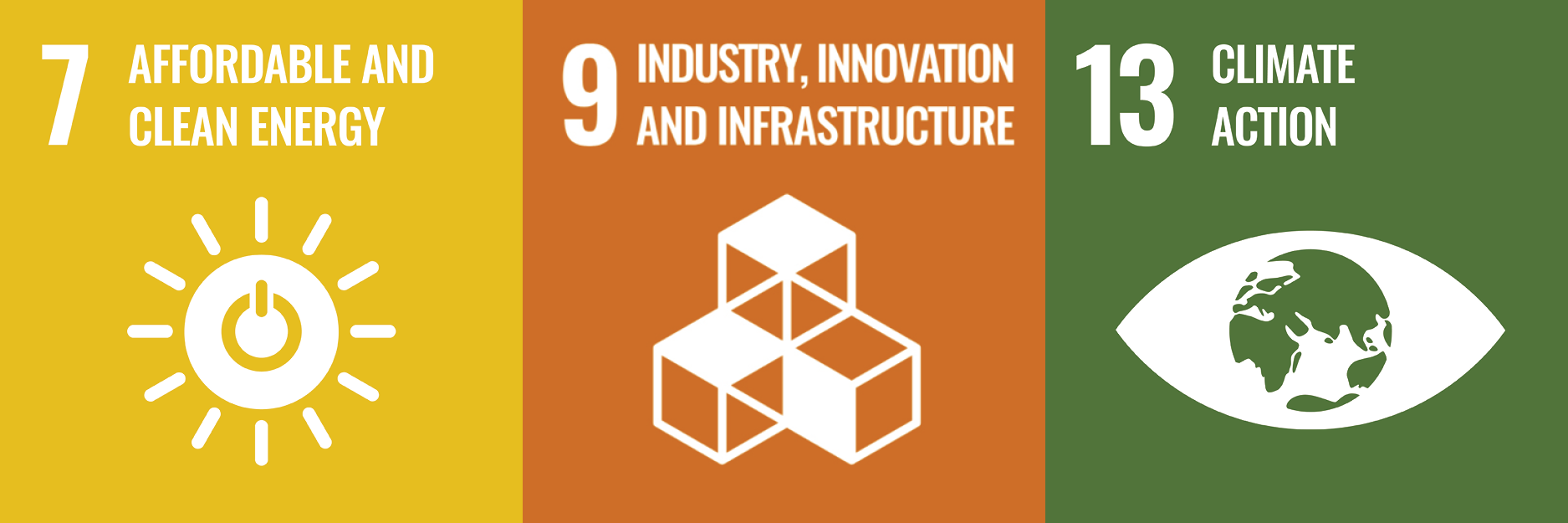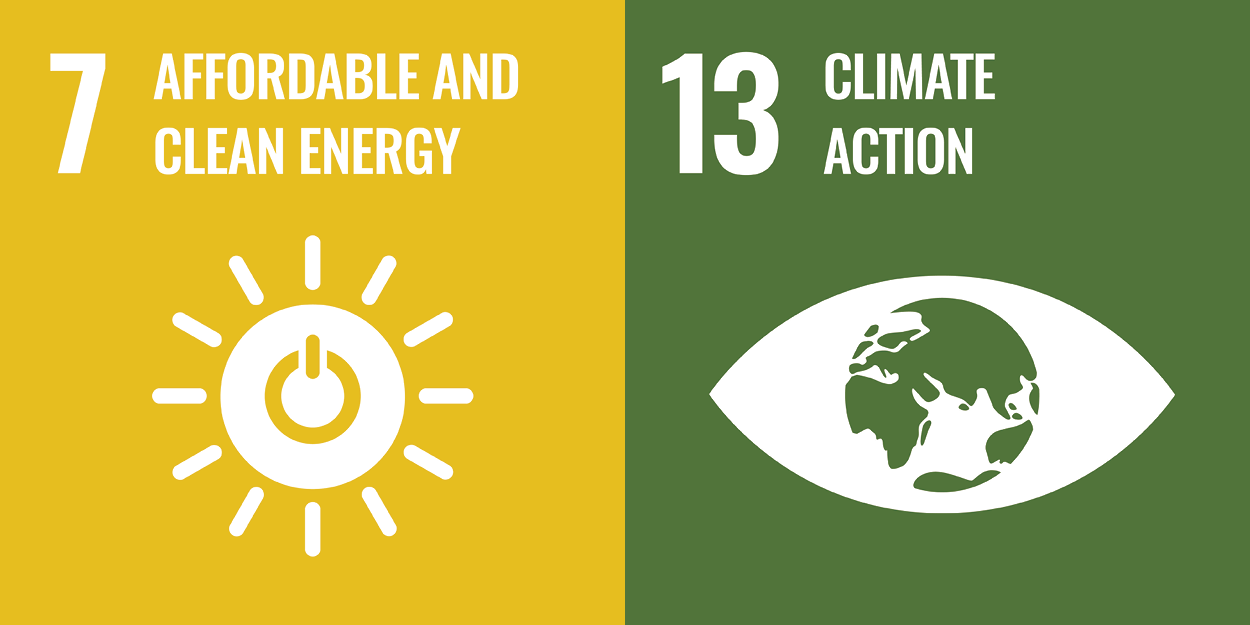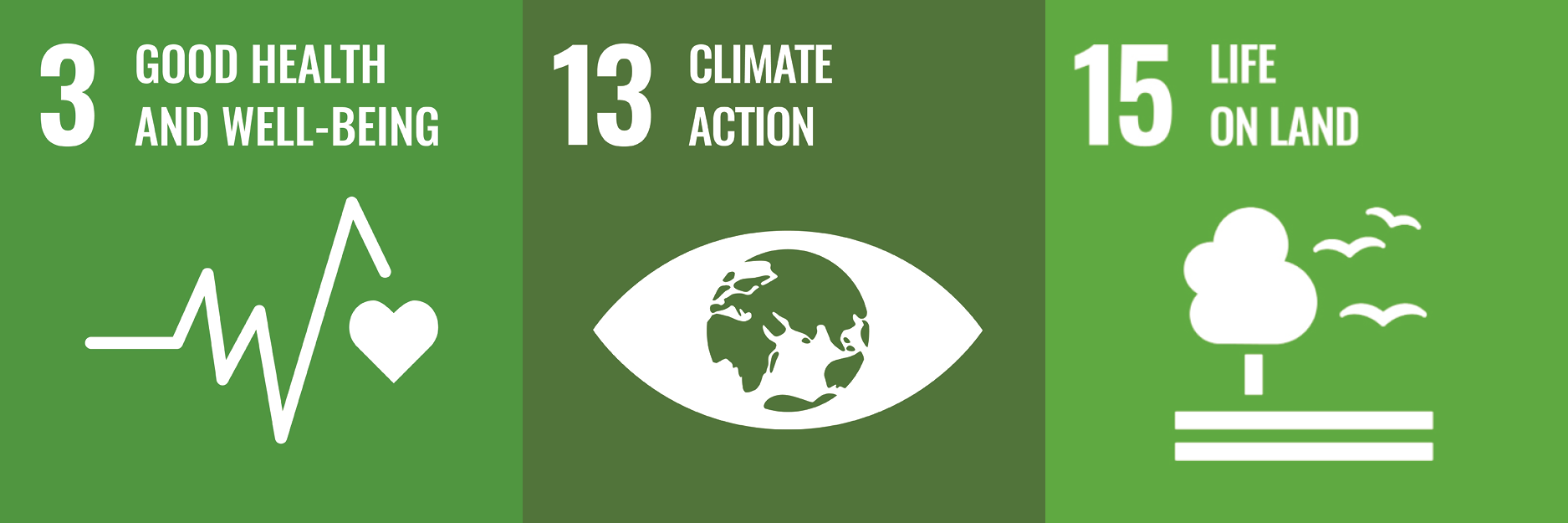Climate Change
T6
Our reporting on Climate Change is set out below. It includes the EPC ratings of our existing homes and the EPC ratings of our newly built homes (ratings completed before the end of the last financial year). Also included are our greenhouse gas emissions, the energy efficiency work undertaken in the last 12 months, how we are mitigating against specified climate risks and how we communicate relevant information with our customers and residents.
The distribution of EPC ratings of existing homes (where an EPC is available), as at 31/3/2023, is as follows:
EPC A: 0.41%
EPC B: 20.92%
EPC C: 63.02%
EPC D: 15.16%
EPC E or below: 0.50%
Note: Data excludes shared ownership properties and properties without an EPC rating
The average SAP score of our homes, as at 31/3/23, is 74.28
Aligns with SDG goals:

The distribution of EPC ratings of homes constructed during 2022/23 is as follows :
EPC A: 0.00%
EPC B: 98.04%
EPC C: 1.82%
EPC D: 0.14%
EPC E or below: 0.00%
Note: shared ownership properties not included in figures
When including shared ownership properties the total EPC distribution of homes constructed during 2022/23 is as follows:
EPC A: 0.42%
EPC B: 98.08%
EPC C: 1.44%
EPC D: 0.08%
EPC E or below: 0.00%
Aligns with SDG goals:

During 2022-23 our* greenhouse gas emissions were as follows:
Scope 1: 6,633 tCO2e
Scope 2: 1,716 tCO2e
Scope 3: 62,482 (exludes C&C stock emissions)
*Figures include C&C but exclude EBHT
Although there has been a significant increase in operational emissions since the baseline year, this is mainly attributable to the fact that the 2022-23 data includes C&C operational emissions whereas the previous years' data do not. C&C has a large Scope 1 footprint due to the preponderance of properties connected to a communal heating system. Over the period between 2019/20 and 2022/23, the operational emissions of Aster only (ie excluding C&C) have reduced by 11.9%, from 7,498 tonnes to 6,632 tonnes.

Aligns with SDG goals:

During 2022/23 we:
- Continued to adopt a ‘virtual first’ approach to working for non-trades staff, reducing the need for employees to travel for business purposes. Grey fleet mileage was 40.9% lower in 2022/23 compared to the pre-pandemic baseline year of 2019/20*
- Continued to ensure office space is used efficiently and building controls are optimised to match occupancy rates. Last year energy consumption at our offices was 37.4*% lower last year than pre-pandemic (2019/20)*
- Secured Social Housing Decarbonisation Funding to upgrade 103 of our least energy efficient properties to EPC C
- Conducted a full stock condition survey to ensure our data is as reliable as possible, refreshing SAP (energy efficiency) information on properties with older or missing data- Invested in stock energy modelling software in order to establish delivery programmes to meet our target of all stock to meet EPC C by 2030, and establish longer-term carbon and energy reduction targets
- Began a programme to train our surveyors to be PAS2035 retrofit assessors
- Improved the loft insulation in 118 homes and added cavity wall insulation to 149 homes, upgraded the windows in 583 homes and upgraded the heating in 1,963 homes with more efficient systems
- Carried out lighting upgrades on 30 communal buildings, resulting in an average 81% reduction in electricity bills and saving 245 tonnes of carbon annually
- Upgraded the heating plant at one housing scheme, replacing three low efficiency boilers (efficiency 79%) with high-efficiency models (efficiency 98%)
- Conducted a small-scale pilot to retrofit photovoltaic systems on 9 properties and one scheme in Dorset
- As the first phase of our emerging 5-year fleet strategy designed to ensure our operational vehicles remain fit for the future, incorporating measures to improve fuel efficiency and reduce carbon emissions, we have ordered 18 new mild hybrid vans (using Ford EcoBlue technology). These are expected to deliver between 3 and 8 percent fuel saving
*Excludes EBHT, C&C and Enham Trust, as these entities were not part of the Aster Group during the baseline year
Aligns with SDG goals:

A new climate change risk assessment will be be carried out during the next year, in line with the recommendations of the Taskforce on Climate-Related Financial Disclosures (TCFD). This will identify those properties at increased flood risk and increased risk of overheating, and will complement the work previously carried out on flood risk.
Our new developments will be compliant with the new Part O of the Building Regulations where relevant.
Aligns with SDG goals:

Information is provided on Aster's external website on how to reduce energy usage and costs, the correct use of heating systems, and how to avoid damp and mould. Guidance is also provided in the welcome pack for new tenants and through our social media channels.
In addition, following a recent survey of our customers, a series of 'how to' videos is planned, covering practical topics such as how to reset a boiler, how to bleed a radiator and how to correctly ventilate a home.
Aligns with SDG goals:

Ecology
T7
C20 – How is the housing provider increasing Green Space and promoting Biodiversity on or near homes?
Our new wildlife and ecology procedure and associated e-learning module for operational staff has been launched. This will help ensure we continue to comply with wildlife-related legislation.
In addition, we have commissioned a biodiversity baselining study, which will assess the current biodiversity value of our land holdings, identify opportunities to further protect and enhance biodiversity across our estate, and ensure we meet the new biodiversity net gain requirements set out in the Environment Act 2021.
Through our volunteering programme our colleagues continue to carry out beach cleans, estates clean-ups and conservation activities.
C21 – Does the housing provider have a strategy to actively manage and reduce all pollutants? If so, how does the housing provider target and measure performance?
We have an environmental management system (EMS), which follows the structure of the ISO 14001: 2015 standard. As part of this, we have mapped out and evaluated our environmental impacts, including the ways we create - or have the potential to create - pollution, and put in place to control or reduce these impacts.
Our EMS includes procedures covering how we manage our wastes, including hazardous wastes, how we prepare for and respond to environmental emergencies such as spills of fuels and chemicals, and how we operate our 34 sewage treatment works, which are our biggest environmental risk.
We have set a number of targets to improve our environmental performance, and progress against these is shown in the infographic. We closely monitor the effectiveness of the measures we have in place through a programme of internal audits.
During 2023/24 we will be providing enhanced spill response training to our oil heating engineers and Facilities team and implementing other measures to improve our response to environmental incidents should they occur.
Aligns with SDG goals:

Resource Management
T8
C22 – Does the housing provider have a strategy to use or increase the use of responsibly sourced materials for all building works? If so, how does the housing provider target and measure performance?
Whilst we do not currently have in place a formal strategy on responsible sourcing this is something we are looking to develop in the future.
In the meantime, we look to responsibly source materials wherever possible. For example, we specify FSC-certified timber for our development sites. In terms of the materials we use to maintain our existing properties, our builders merchants are increasingly introducing new lower impact products to Aster's core range. A recent example of this is the introduction of silicone sealants which are packaged with resealable aluminium foil to replace single-use plastic cartridges.
C23 – Does the housing provider have a strategy for waste management incorporating building materials? If so, how does the housing provider target and measure performance?
We continue to work with our waste broker to improve the way our waste is managed and have set a zero waste to landfill target.
For the period 1st August 2022 to 31st March 2023, 81.5% of our waste was recycled, 18.1% was incinerated with energy recovery and 0.3% was disposed of to landfill. When asbestos is excluded only 0.14% of our waste waste was landfilled. (Note that the figures do not include C&C or EBHT's waste.)
Going forward, we will look to identify ways to reduce the quantity of waste we produce, and will set a waste minimisation target.
C24 – Does the housing provider have a strategy for good water management? If so, how does the housing provider target and measure performance?
Over the next year we will be developing plans to improve the water efficiency of both our homes and our operations.
As a first step to help us to identify water savings for our schemes, offices and depots we have engaged a broker to carry out validation checks on our water bills and consolidate our billing. This will mean that we will be able to monitor our water consumption more easily and identify those sites where consumption is higher than expected, so that we can put in place appropriate water efficiency measures at these sites.
Aligns with SDG goals:
